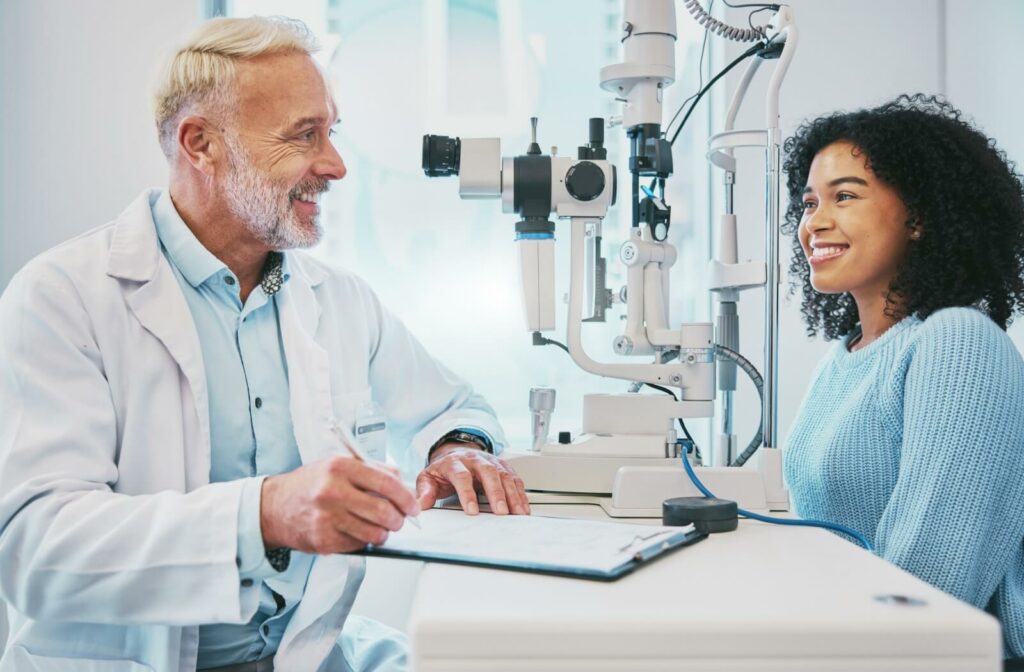All Categories
Featured
Table of Contents

Regular eye exams are important for preserving great vision and spotting prospective eye health concerns early. The frequency of these tests can vary dramatically based on an individual's age, way of living, and overall health and wellness. Recognizing the suggested schedule for eye examinations can assist ensure that individuals of all ages receive proper care and tracking for their eye wellness.
Newborns and Toddlers (0-2 Years)
For infants and young children, eye examinations are important for discovering any potential vision issues early on. The American Academy of Ophthalmology advises that a child's initial eye examination should happen at around 6 months old. Throughout this initial see, the eye treatment specialist will analyze the kid's visual advancement and check for any noticeable eye problems.Following this very first test, it is suggested that youngsters have another eye examination at age 3. This browse through will certainly focus on evaluating the kid's total visual feature, consisting of eye positioning and the capacity to track items. If no concerns are identified, the following examination must be scheduled before the kid starts school, typically around age 5 or 6.
School-Aged Children (6-18 Years)
Regular eye examinations need to be set up every one to two years when kids reach college age. Vision is vital for finding out and development, and numerous schools perform vision screenings. These testings do not replace a thorough eye test by an eye treatment specialist.For children associated with sporting activities or tasks requiring considerable aesthetic focus, annual eye tests may be recommended. Additionally, if a youngster displays indicators of vision issues-- such as difficulty reviewing, scrunching up your eyes, or frequent migraines-- a check out to the eye physician ought to be arranged asap.
Young Adults (19-39 Years)
Young adults commonly have fewer vision changes than older age, however routine eye exams stay essential. The basic referral is to arrange an eye examination every 2 years throughout this duration. Individuals with details danger elements-- such as a family background of eye illness, diabetes mellitus, or those that wear contact lenses-- should take into consideration annual eye examinations.In addition, those that spend significant time on digital tools may experience electronic eye strain. If signs and symptoms such as dryness, exhaustion, or blurred vision happen, it may be a good idea to see an eye care specialist sooner.
Grownups (40-64 Years)
As people get in middle age, the probability of establishing vision issues boosts. Grownups aged 40 to 64 should set up eye exams every one to 2 years. This age team may start to experience presbyopia, an all-natural age-related problem that makes it challenging to focus on close things. Eye exams can additionally assist spot various other typical age-related problems such as glaucoma, cataracts, and macular degeneration.If individuals in this age team have threat elements like high blood pressure or diabetes mellitus, they might call for more constant assessments to check their eye health closely.
Senior Citizens (65 Years and Older)
For senior citizens, normal eye tests come to be even much more vital. The American Optometric Association advises that individuals aged 65 and older have an eye exam at the very least when a year. Older adults go to a greater risk for various eye diseases, including cataracts, glaucoma, and age-related macular degeneration. Early detection and therapy of these conditions can prevent vision loss and improve the lifestyle.Verdict.
Comprehending the suitable timetable for eye exams based on age is crucial for maintaining optimum eye health and wellness throughout life. By adhering to these guidelines and consulting with an eye treatment specialist, individuals can take proactive steps towards preserving their vision and total health.Table of Contents
Latest Posts
Explore Strathmere’s Hidden Gem: Enjoy, Dine, and Unwind at Deauville Inn
Published en
2 min read
Boost Your Occasion with The other day's Tavern Food catering
Published en
1 min read
Experience Year-Round Charm at Deauville Inn: From Warm-Weather Fêtes to Cozy Coastal Meals
Published en
2 min read
More
Latest Posts
Explore Strathmere’s Hidden Gem: Enjoy, Dine, and Unwind at Deauville Inn
Published May 17, 25
2 min read
Boost Your Occasion with The other day's Tavern Food catering
Published May 16, 25
1 min read
Experience Year-Round Charm at Deauville Inn: From Warm-Weather Fêtes to Cozy Coastal Meals
Published May 15, 25
2 min read